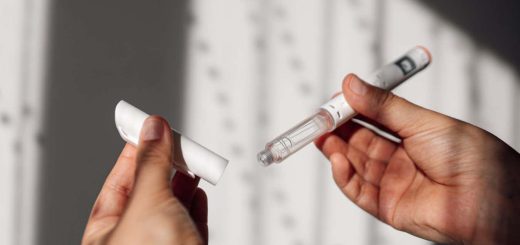Deep-brain probe can read a rat’s brain without surgical implants
A tiny probe that can be moved deep into the brain via blood vessels could one day monitor brain activity in people with epilepsy or Parkinson’s disease
By Chen Ly
20 July 2023
The probe (yellow) can be inserted into a blood vessel via a catheter (cyan)
Anqi Zhang, Stanford University
Rats have been injected with a tiny, ultra-flexible probe that records the activity deep within their brains, bypassing the need for a surgical implant. The technology could one day offer an effective, minimally invasive way of monitoring and treating brain conditions in people.
Brain-machine interfaces (BMIs) are devices that are implanted into the brain to record its electrical signals and send them to a computer. They can also be used for deep brain stimulation, in which electrodes produce electrical impulses to regulate abnormal ones. BMIs have been central to neuroscience research and the treatment of neurological conditions, such as Parkinson’s disease, says Charles Lieber, formerly at Harvard University.
Some BMIs use sensors that are placed on the scalp, but their recording resolution tends to be poor as the skull dampens the brain’s electrical signals. To more accurately measure activity deep within the brain, electrodes can be implanted via open-skull surgery.
Advertisement
Now, Lieber and his colleagues have developed a BMI that may overcome the trade-off between an extremely invasive procedure and low resolution.
The blood vessels in the brain sit a few micrometres away from its neurons, making them a useful place to monitor brain activity. To create a device that can be moved through winding, microscopic blood vessels, the team used a flexible polymer to build a 7-centimetre-long mesh-like probe embedded with 16 electrodes.
After making a small incision in a group of rats’ necks, the team guided the probe to the base of the animals’ brains using a 10-micrometre-wide catheter. After insertion into a blood vessel, the probe expanded and stuck to the vessel’s walls, allowing its electrodes to pick up signals from nearby neurons.


